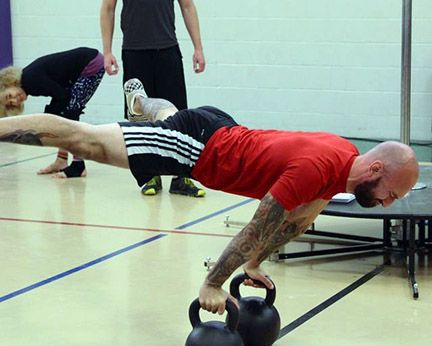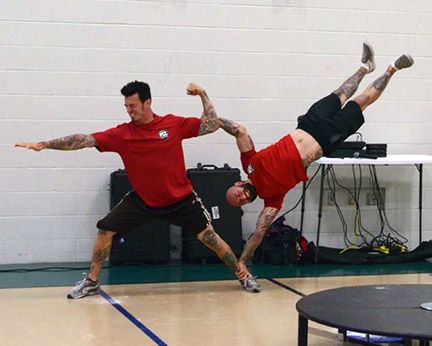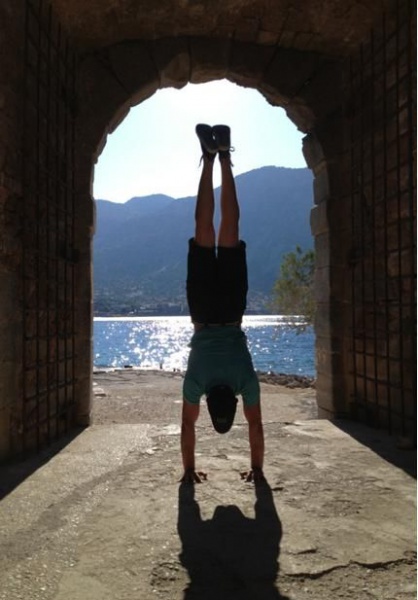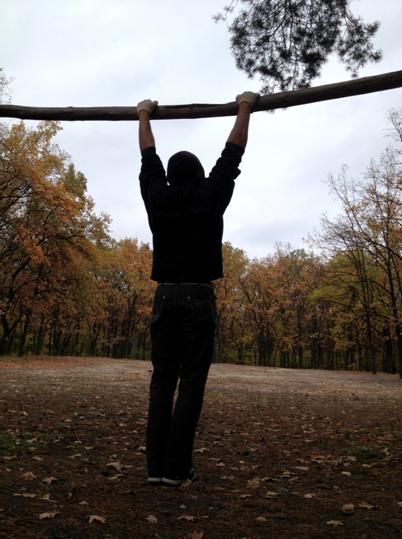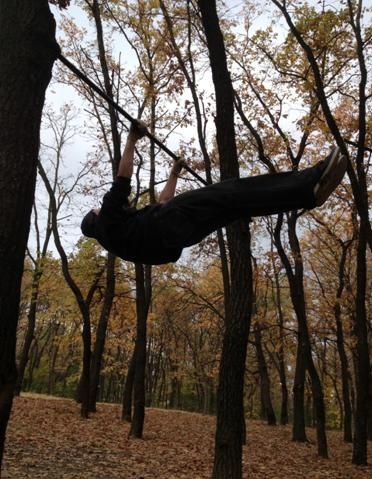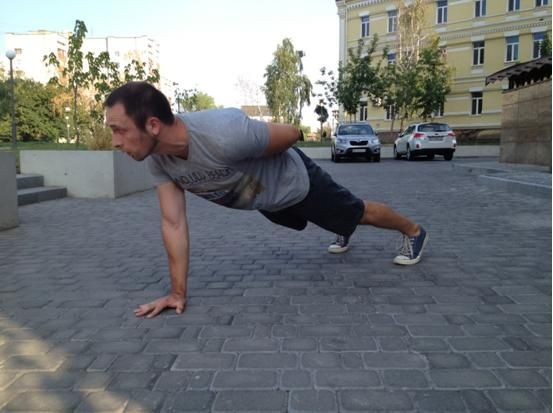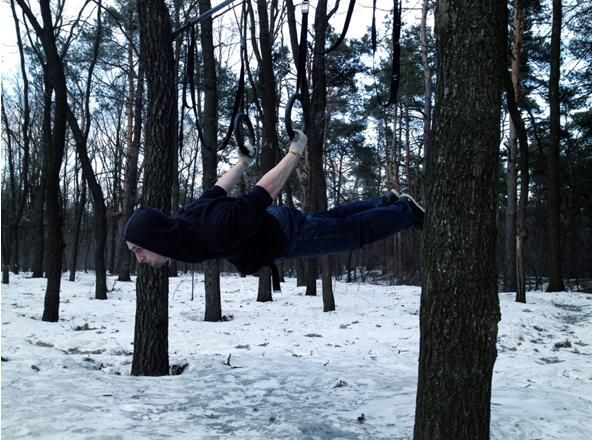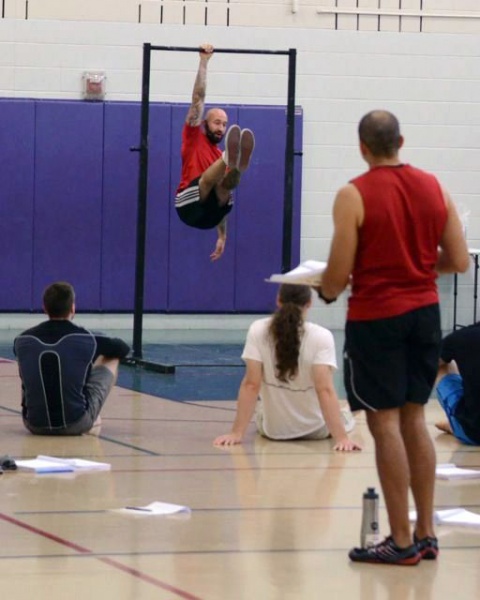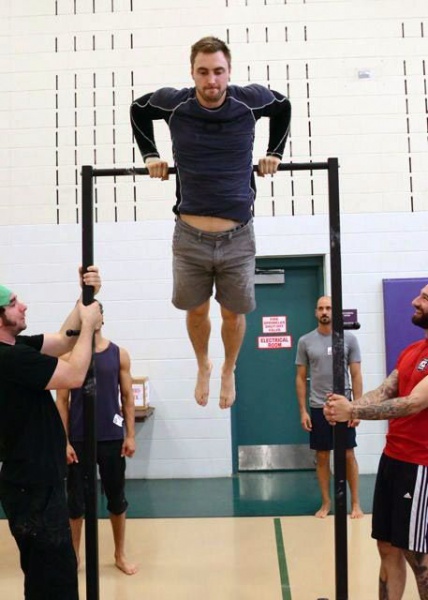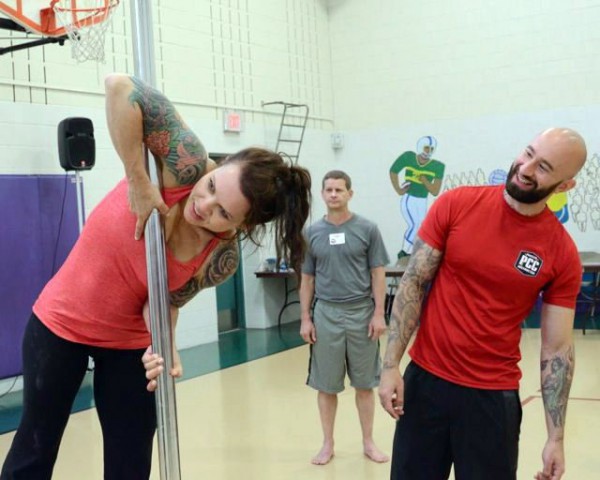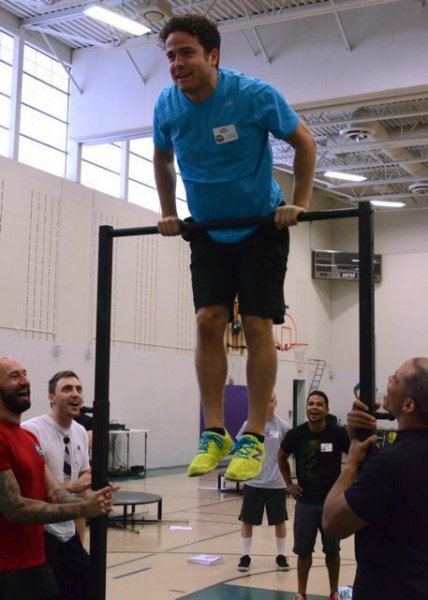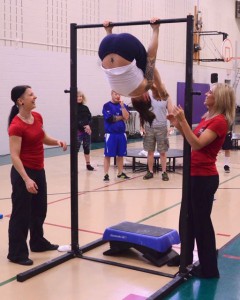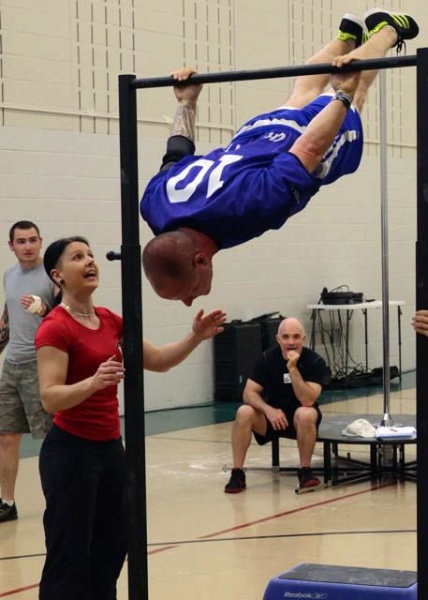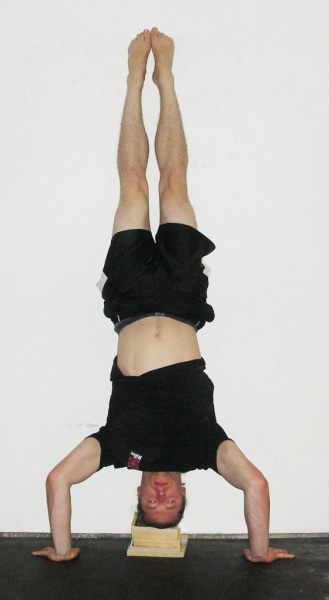
When I got started with bodyweight training my goal was to be able to do a handstand push-up against the wall. My upper body strength had always been quite weak as judged by the bench press, so I figured if I could achieve this goal I’d be on my way.
However, it was a long ways off. It took me awhile just to get the handstand against the wall. If I bent my arms at all I would come crashing down. But I was committed to the journey, and within a few months I achieved my goal.
This started a lifelong love of the handstand push-up. There wasn’t all that much information available on how to do this exercise out there so a lot of what I learned came from trial and error.
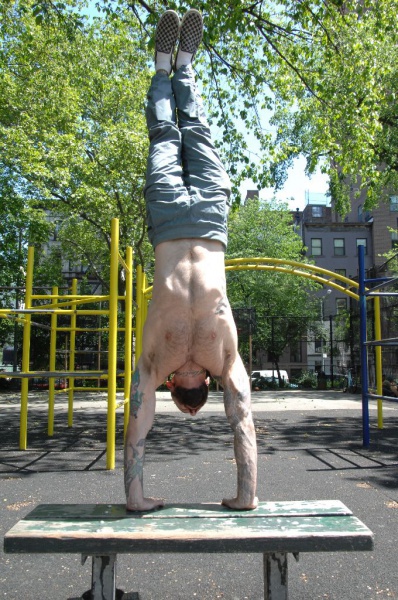
I’ll never forget the one training session that led to my “Aha!“ moment. Fast forward a couple of years from my first rep and I was doing a handstand push-up focused routine. I had worked up to doing about 5 reps and thought I was ready to increase my range of motion. Now my goal was a full range handstand push-up (hands to shoulders on an elevated platform).
One of the best ways to get better at handstand push-ups is to increase the range of motion just a little bit at a time. This was a method I had used in getting to my first head-to-the-floor rep, and it was my plan in working towards the full range.
I kicked up on my elevated setup in my garage and went for my first rep. As I lowered down I couldn’t even manage a single rep. What was going on?
I had only increased the range of motion about two inches. It shouldn’t have been THAT much harder. But it was.
What I came to realize is that I hadn’t just changed the elevation but much else about how I was doing the exercise. This was the first time I came to realize that small changes in your body position make BIG differences in the difficulty of the handstand push-up.
When the average person does regular push-ups, their elbows flare out far to the sides. While this is okay, it is not optimal. Done too much, this can cause problems for the shoulders as all the stress is placed into one area.
However the same problem does not occur in handstand push-ups. Because of the vertical, rather than horizontal angle, the shoulders are in a fine position either way.

Do a little experiment with me. Go ahead and put your arms straight overhead right now. Now widen their position. If you look closely you’ll notice that when you widen them they’re not quite as high.
A part of how this hand position changes the difficulty may be in a favorable angle for you to push. This will probably depend on what you’re used to doing. The majority of it comes from the fact that you shorten your range of motion with a wider hand position. A shorter range of motion means an easier exercise. And this is something you can do without any sort of equipment.
Although it’s not a huge decrease in range of motion, it is close to the sticking point in the press and thus can make a big difference in what you can do.
If handstand push-ups are something you can do right now go ahead and kick-up against the wall and give this a shot. Do a few reps with a wide hand placement. (Don’t go too wide as you’d lose all leverage and it would then become very hard). Then try a couple with the hands at shoulder width and note the difference.
If you watch people doing handstand push-ups, you can notice how close or far their hands are when they do them. Remember, a wider position is easier and will allow you to do more.
This can be helpful in allowing you to achieve that first rep.
This can be useful in allowing you to push your numbers up. (This easier form of handstand push-ups is what I used to achieve my current record of 21 reps against the wall.)
This can be used in helping you do full range handstand push-ups.
This can also be a big help in doing freestanding handstand push-ups and other bent arm presses.
When you’re holding a handstand you’ll usually want the hands to be shoulder width apart, as this is best for maintaining the structure in the handstand. However, if you’re doing any sort of bent arm press it can be made easier using this technique. All you have to do is practice balancing in the handstand with a wider than normal hand placement.
Of course, if you use this all the time it may make it harder to do anything where you need the shoulder width or more narrow hand position. For this reason it is best to mix it up. In any case this technique can be a useful addition to your bag of tricks, and a form of progression you can use.
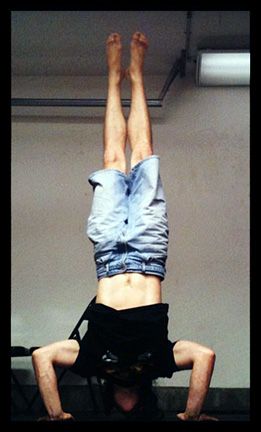
***
About Logan Christopher: Logan Christopher has been called a physical culture renaissance man as he is accomplished in a wide range of strength skills from kettlebell juggling, performing strongman stunts, and bodyweight exercises. He is the author of numerous books including Secrets of the Handstand and The Master Keys to Strength & Fitness. In addition, he’s spent the last several years going deep into mental training to find out what it takes to really excel and tactics that can help people instantly improve their exercises. You can find out more about all this at http://www.legendarystrength.com/.

